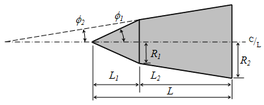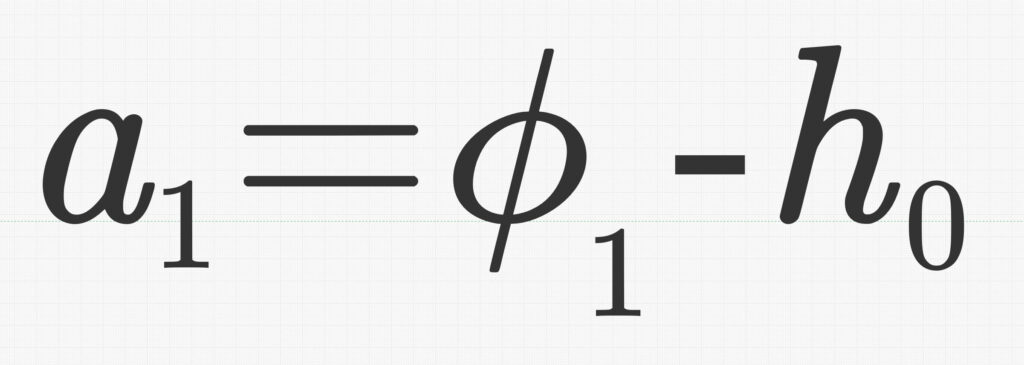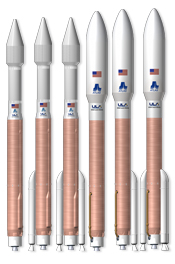by Bill Claybaugh, Reaction Research Society
Dislocations in the Center-of-Gravity (Cg) of a rocket with respect to the vehicle centerline can lead to “coning” in flight. This coning is visually characterized by a corkscrew exhaust trail when it occurs during thrusting. Whenever it occurs—and it is likely in all rockets that are not axisymmetrically balanced—it increases drag and lowers performance. In cases of “extreme” unbalance (which can occur for axial offsets of Cg of as little as a few tens of thousandths of an inch for small diameter rockets) the vehicle can be torn apart in flight by the aerodynamic forces created by the Cg imbalance.
For rockets that are carefully designed to be axisymmetric, the only important issue to address in assuring balance of the rocket is to make certain that the fins all have the same weight within a small margin (removing mass from the heavier fins is best done at the fin Cg). If all other components are axisymmetric—including the propellant grain—then the only part of the vehicle that will require formal balancing is the payload:
I Longitudinal Balancing
The image below shows the set up for longitudinal balancing of a payload:

Two identical scales are slightly modified to support the payload so that the longitudinal axis is parallel with the base of the scales and level.
After carefully measuring the distance between the centers of the two scales (6.760” in this example) the weight of the payload supported by each scale is noted in two orthogonal planes. Using a moment balance calculation, the center of gravity is determined in each plane:
Averaging three measurements in plane 1, the scales showed 6.953 lbsm on the left side and 4.523 lbsm on the right scale. Creating an arbitrary starting datum for calculation that is 0.7125” to the right of the right scale center point (that is, at the bottom of the payload base plate) allows the following center of mass balance:
Cg = (4.487 lbsm * 0.7125 in.) + (6.967 lbsm * 7.4725 in.) / (4.487 lbsm + 6.967lbsm)
= 4.824” from the datum.
Rotating the payload by 90 degrees and weighing again allows calculating the Center of Gravity in that plane, in this case, that value was:
Gg = 4.881” from the datum.
Thus, the Cg appears—on average—to be offset by 0.057” between the two planes.
Balancing: Subtractive and Additive
Balance can be achieved either by subtracting weight from the top of and in the plane that shows the longer Cg distance (Plane 2, in this case) or by adding weight to the top of the plane that has the shorter Cg. Conversely, weight could be added at some bottom location of Plane 2 or deducted from a bottom location on Plane 1. Note that any of these actions have effects on the rotational balance, which we will address in a future article.
Subtractive Balancing
We can estimate the amount of weight that needs to be deducted from the firstplane by deciding that the weight will be removed at 9.375” from the datum (a location at the top of the conical aluminum section, just below the fiberglass structure that supports the flight computer / transmitter in the image).
The mass required to move the Cg by 0.057” is then:
Mass Lost (or Gained) / New Total Mass = Change in Cg / Distance to New Mass
Adjustment Mass / (11.451 – Adjustment Mass) = .057 / (9.375” – 4.881”)
Adjustment Mass = 0.142 lbsm
This mass must be removed at equidistant locations from the rotational axis, that is, we will require two 0.071 lbsm axisymmetric holes in opposite sides of the payload at the required location.
We can estimate the drill depth assuming the use of a mill cutter. The required cutting depth is then the cross-sectional area of the mill times the drill depth times the density of aluminum:
Mass to be removed = 0.098 lbsm. / cu. in. * (pi * r^2) * h
For a 0.5” mill cutter that depth is:
0.071 = 0.098 * 3.1416 * (0.5 / 2)^2 * h
h = 3.69”
Obviously, this is impractical as the depth of aluminum at the subject location is only 0.125”.
Additive Balancing
The relatively large cutting operation required for subtractive balancing is due to the low density of aluminum. Alternatively, we can estimate the additional mass required in the shorter of the two planes (Plane 1). Because we can use, for example, tungsten for the weight adjustment, it is possible to move the shorter Cgforward with much smaller but higher density balance weights.
Adding mass at a greater distance from the Cg will lower the mass required to achieve the needed shift. If we consider adding mass at a location 13.375” from the datum location (on the cross bar near the top of the fiberglass structure that supports the flight computer / transmitter) we can calculate:
Adjustment Mass / (11.454 + Adjustment Mass) = .057 / (13.375” – 4.824”)
Adjustment Mass = 0.0763 lbsm
Noting that one-half of this is 0.03815 lbsm or 17.3 grams, we can observe that a standard tungsten weight used in “pinewood derby” cars of 0.25” diameter and 0.5” length weighs about 14 grams. Thus, drilling two axisymmetric holes at the required location and gluing the tungsten counterweights in place will produce a Gg offset close to the 0.057” adjustment required (see the comments below on the resolution of this system for locating the Cg). Note that the two balance weights, in final form, need to weigh the same within a small margin or they will introduce a mass imbalance in rotation. We should also note that we are not here accounting for the mass removed to make the holes for the counterweights.
Verification
The final step is to remeasure the Cg in both planes and verify that they are within the resolution of the measurement system. If not, another, smaller, adjustment in mass in the longer plane or an adjustment of the balance weight in the shorter plane may be required.
A Note on Accuracy
The relativity low cost scales used in this example resolve weight to 0.10 grams. However, multiple measurement in the same plane (achieved by gently pressing on the payload to reset the scales) shows that the scales are in fact accurate to about +/- 10 grams, about 0.3% of the total weight of the subject payload.
This means that the true resolution of this system with regard to differences in Cg between planes is about 0.015”, thus, once the Cg between the planes is within 0.15”, further adjustment is unlikely to increase accuracy using these relatively low-cost scales.




















